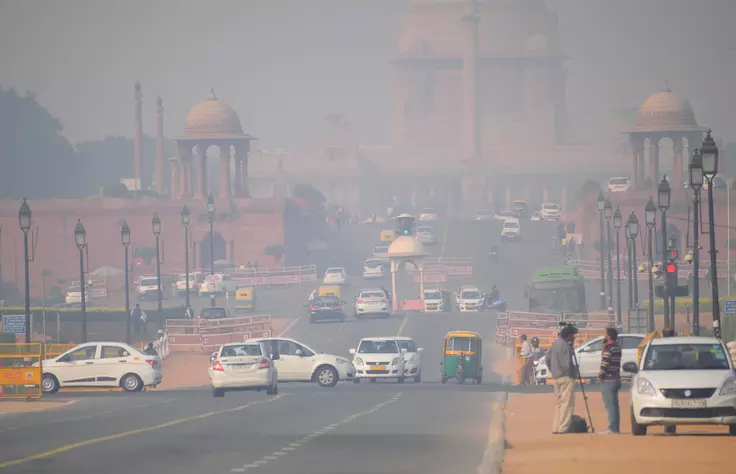
The city on Tuesday recorded ‘severe’ air quality for the second consecutive day, though overnight winds helped to partially clear up skies.
Gurgaon‘s 24-hour air quality index (AQI) was calculated at 402, down from 469 on Monday. Meteorologists said AQI improved because wind speed went up from 8kmph to 12kmph, and limited fog from forming.
Monday was the most polluted day of this winter season, but on Tuesday, the air quality monitoring station in Gwalpahari recorded average AQI at 494. The air quality scale maxes out at 500.
Average AQI at the Sector 51 station was far lower, at 408, and Teri Gram recorded 393. Gurgaon’s fourth station at Vikas Sadan saw average AQI at 373 on Tuesday.
Experts warned that stubble burning from farms across states was a key contributor to winter pollution, but local emissions were equally if not more important to cut for a long-term solution to this public health crisis.
An analysis by the Centre for Science and Environment (CSE) calculated that over a quarter of PM.2.5 pollutants in the city’s atmosphere were released from vehicles.
“Modeling shows a consistent 26% contribution from transport for sectoral share of PM2.5 in Gurgaon. The Vahan database reveals that Gurgaon saw a substantial increase in vehicle registrations. Over the past five years, the annual average of new registrations was 91,481, reflecting an annual growth rate of 9.7%,” said Anumita Roy Chowdhary, executive director of research and advocacy at CSE.
Chowdhary emphasised the urgent need to control vehicular emissions.
“The growing number of vehicles is a major factor in deteriorating air quality. Effective strategies are needed to mitigate this issue and protect the health of Gurgaon’s residents,” she said.
Noida’s air quality improved slightly to 370, as did Faridabad’s (320) but both were still ‘very poor’.

